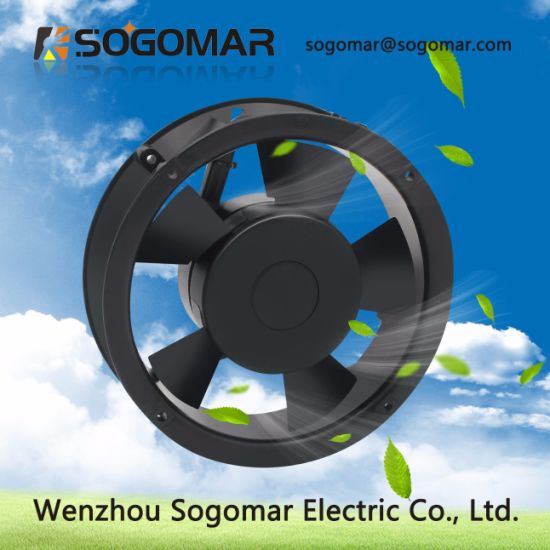One of the primary advantages of EC centrifugal fans in AHU retrofit projects is their energy efficiency. Compared to AC axial fans, EC fans use significantly less electricity to produce the same airflow. This means that they consume less energy and have lower operating costs. Since fans are usually running continuously in AHUs, the energy savings over time can be quite significant. In addition, EC fans offer better control of air flow rates, enabling more precise management of air quality and temperature.

Another benefit of EC centrifugal fans in AHU retrofits is their compact size. Compared to AC axial fans, EC fans are generally smaller and lighter, making them easier to install and maintain. This primarily attributes to their brushless DC motor technology, which reduces the overall size of the fan without sacrificing performance. Also, EC fans are quieter than AC axial fans, an essential factor in noise-sensitive applications.
EC centrifugal fans offer several other advantages over their AC axial counterparts. For instance, they are more durable, capable of operating in filthy conditions and withstanding a wider range of temperatures. This makes them ideal for use in harsher environments, ranging from industrial facilities to medical clean rooms.
In an AHU retrofit project undertaken by (need remove brand name), who specialize in manufacturing energy-efficient ventilation equipment, EC centrifugal fans were compared with AC axial fans. The project aimed to assess which of the two fan types would be more suitable for an air-handling unit upgrade in a commercial building to improve energy efficiency.
The testing results demonstrated that EC centrifugal fans outperformed their AC axial counterparts in energy efficiency, despite a higher initial cost. Compared to AC axial fans, the EC centrifugal fans offered energy savings of up to 50%, which was a significant reduction in energy consumption. This meant that the overall operating costs were much lower.
Furthermore, the EC centrifugal fans produced less noise, and their compact size allowed for easier installation within the limited space, reducing the time and effort in retrofitting the air-handling unit.
The bottom line is that EC centrifugal fans are ideal for AHU retrofit projects that require energy-efficient solutions. Their compact size, durability, and superior control of air flow rates make them ideal for a wide range of applications, including those with harsh operational environments. These benefits come at a higher initial cost; however, the energy savings they offer over time make them a wise investment for building owners looking to reduce costs in the long run.
In conclusion, when choosing between AC axial fans and EC centrifugal fans for an AHU retrofit project, the focus should be on energy efficiency in the long run, environmental sustainability, and air quality regulation. A retrofit using EC centrifugal fans can introduce a more energy-efficient airflow management system, contributing to both economic and environmental benefits through reduced energy consumption and lower carbon emissions.